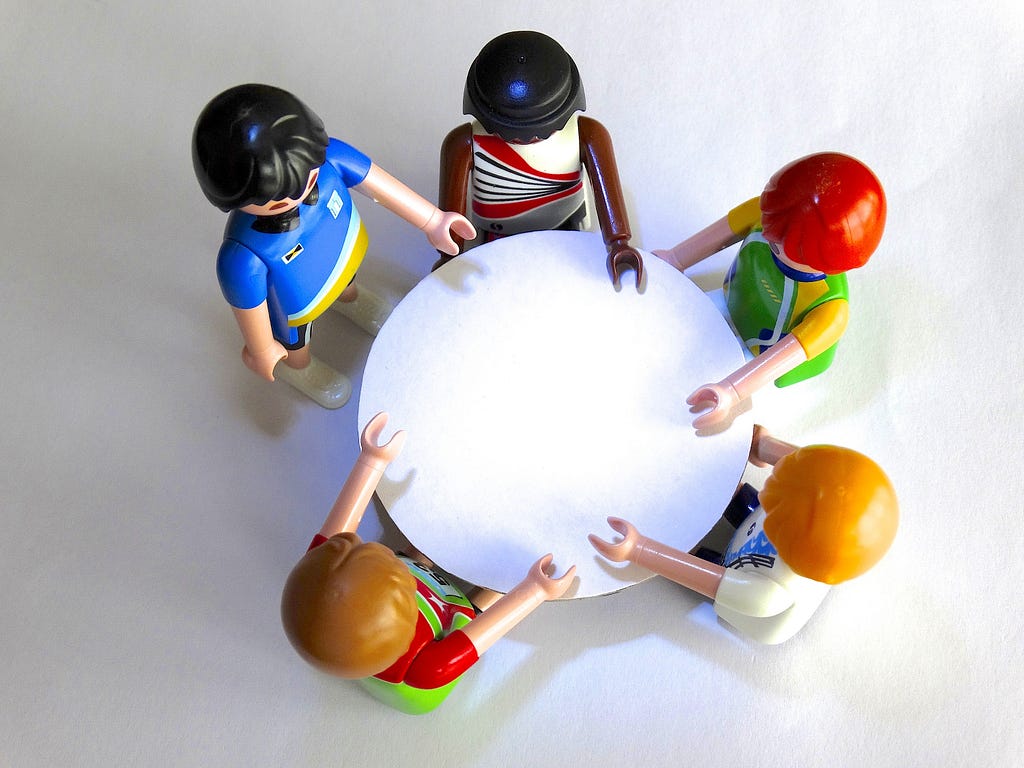Three easy ways to improve your daily standup meetings
Although this is a blogpost about software development, it feels wrong to not at least mention the turbulent times we live in right now. Equal and fair treatment from the authorities for absolutely all human beings, should be a no-brainer in 2020! I hope that when everything settles down, we have come a huge step closer to a world with actual equal rights. And, as a segway to the main topic of this blogpost: You can consider this the secret number 0 on my list (all good lists start at 0, after all!): If you don’t treat everyone with the same amount of respect, you’ll never get good standup meetings, or good teams, or good anything, really.
That said, lets move on to standup meetings: I am willing to bet that most of you have fallen into the most common trap of all — the one where your standup turns into a daily status meeting instead. Sounds familiar? It is at least something I see a lot, and a trap that I continually try to get myself and my teams out of — with varying degrees of success. I don’t have all the answers by far, but I’ve found a few easy ways to move the standup meetings a few inches closer to being the collaborative meetings they are supposed to be.
1. Let the team decide the talking order themselves

When we have standups in the office, we usually start with a more or less random person and then the talking order continues to the person standing next to them. But, as many others, everyone in our company works from home these days, and there isn’t a natural “talking order” anymore. What we started doing in my team, is that a random person start out talking, and whenever he or she is done, they “nominate” the next person to talk.
This accomplishes two things: First of all, it mixes things up a bit, so that you never know if you are the next one up to talk and it might get people to be more alert. Second, this gives the team a little bit more control, which means they are just a little bit self organizing. The alternative – which is that the “leader” (often the project manager) decides who talks when — just enforces the feeling that the team is updating the project manager rather than coordinating amongst themselves. It is a subtle difference, but it’s there. So I hope that we will bring our new tradition back with us when we return to the office.
2. Have fun together

Using humor is not one of my strong suits, but I’ve seen the difference it makes in a standup meeting, so I’m including it anyways and am working on how to incorporate more of it in my team. One of my colleagues is fantastic at using humor in general, and in standup meetings in particular. I have been fortunate enough to have a small guest role in her team for the last few months, and I always enjoy these daily standup meetings.
I probably shouldn’t say this out loud, but some standup meetings can get kind of boring (sorry to say, but it’s true!). So when I have standup meetings that I actually enjoy going to, because I end up lauging a lot, it really brightens my day! 🙂 This “laughter first” approach isn’t just due to the scrum master (though she often leads the way), the whole team chimes in and shows that you can do serious work and have fun at the same time.
Cracking jokes and laughing is a good way to bring a team together. It makes the meetings more personal, people tend to pay more attention, and when you have fun together and enjoy each other’s company, it also makes the collaboration so much easier. Win-win! 🙂
3. Ban the Jira board from your standup meetings

I don’t know about you, but for the longest time the Jira board was a mandatory participant in each and every standup meeting we ever had. You would think it was a silent and unobtrusive participant, being a software and all, but actually it demanded quite a lot of attention. Jira was always the focus of the meeting, and we never really questioned whether this was a good idea or not. Until one of my colleagues (yes, I’m lucky to have great colleagues! 🙂 ) wondered aloud what would happen if we didn’t bring up the Jira board in the standups. So naturally, we had to try it, and I at least haven’t looked back since.
No, I’m not in camp “Jira is evil”. I think Jira is a terrific tool when you use it to collaborate. If you use it to micromanage people, you’re just on a wrong path alltogether, and then it’s not Jira’s fault that you’re using it for evil. 😛
However, while Jira is a great collaboration tool, when you bring it into your standup meetings, it is a surefire way to derail the meeting fast. It is all too easy to get lost in the tangle of “why haven’t you moved the issue to the right status” or “why is this issue unassigned” (all very good questions, just not right for the standup meeting). Before you know it you’ve fallen right into the “we are reporting on the status of the Jira board” trap.
Just ban Jira (or Trello, or whatever tools you’re using) from the standup meetings, and keep the focus on the the conversations in the team instead. You’d be surprised at the difference it makes in shifting the focus from reporting to collaborating.
So, these are three of my tips for better standup meetings. I’m always looking for ways to improve standup meetings (and anything software development related really!), so I’d love to hear any and all ideas others use!
Three easy ways to improve your daily standup meetings was originally published in Grensesnittet on Medium, where people are continuing the conversation by highlighting and responding to this story.